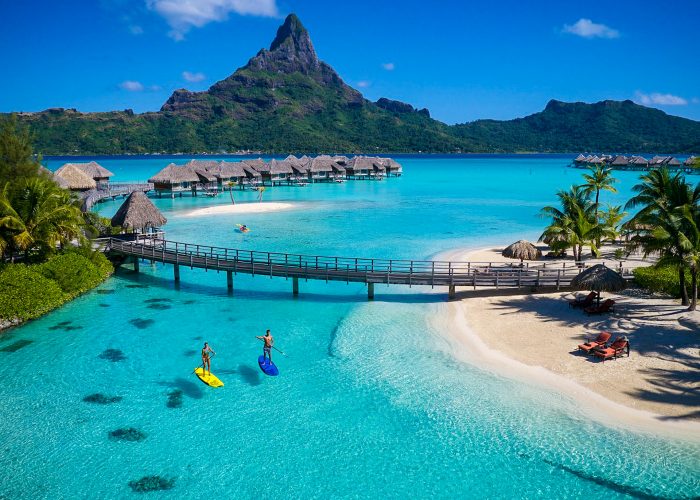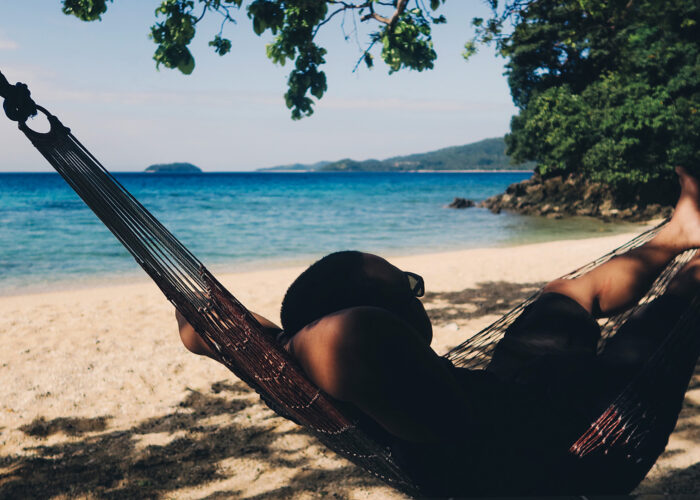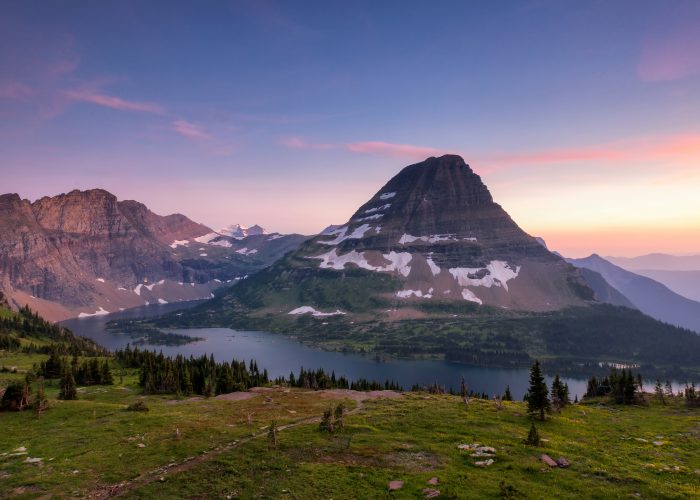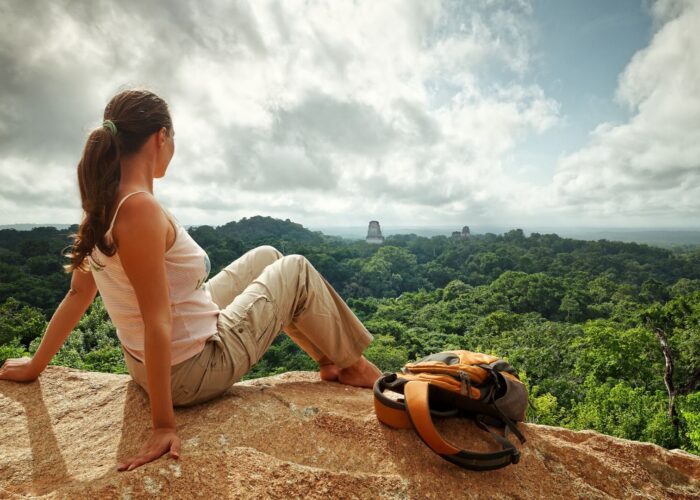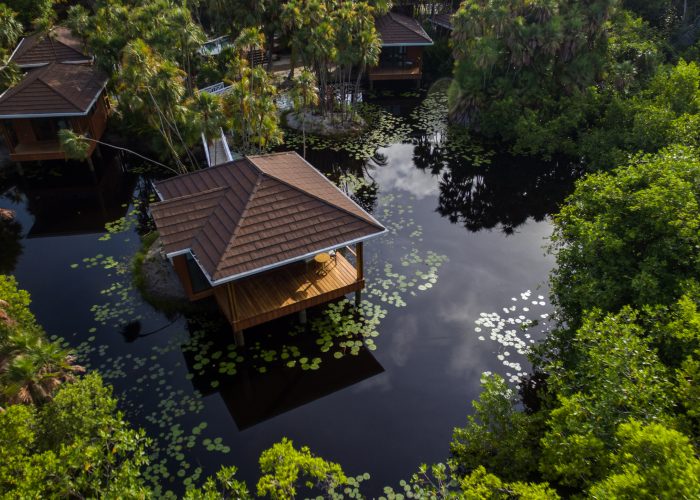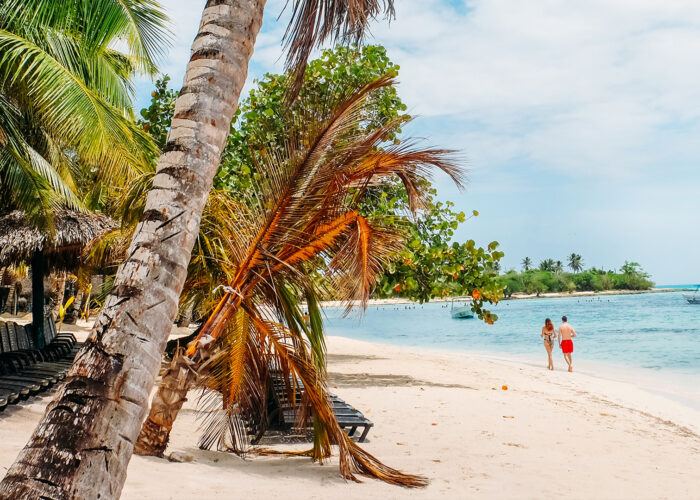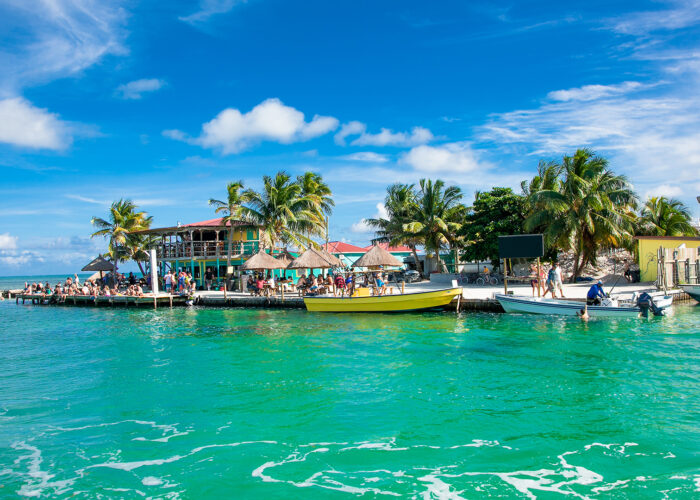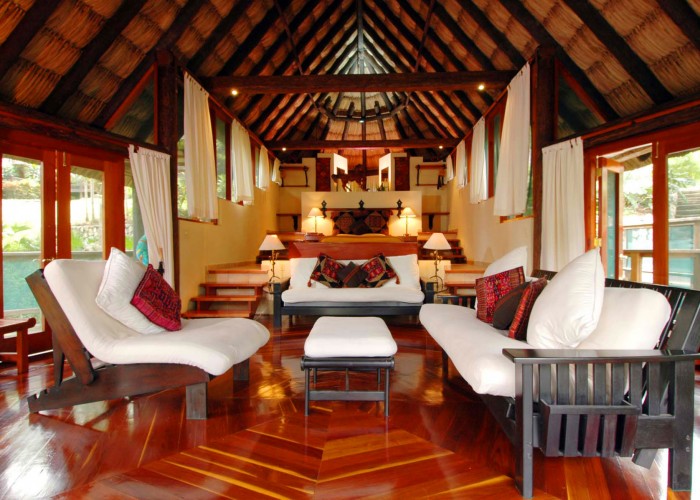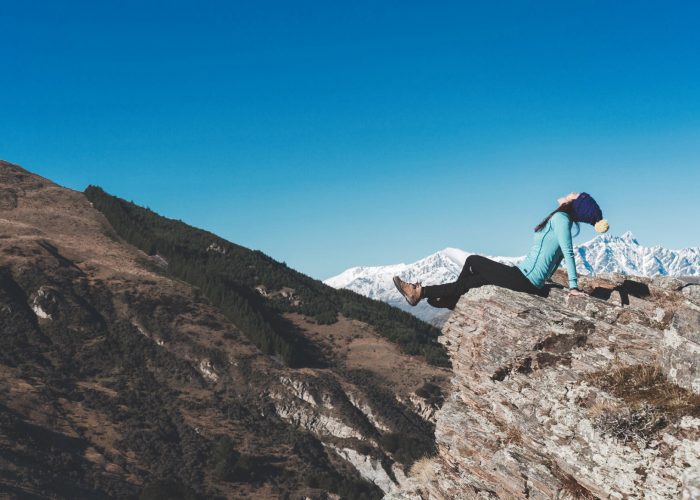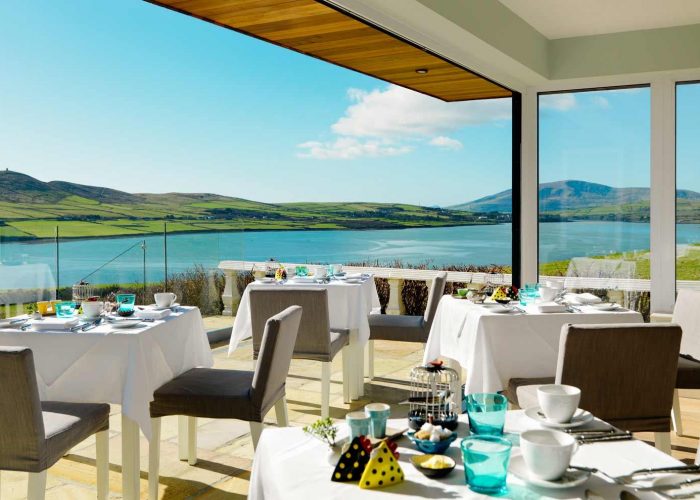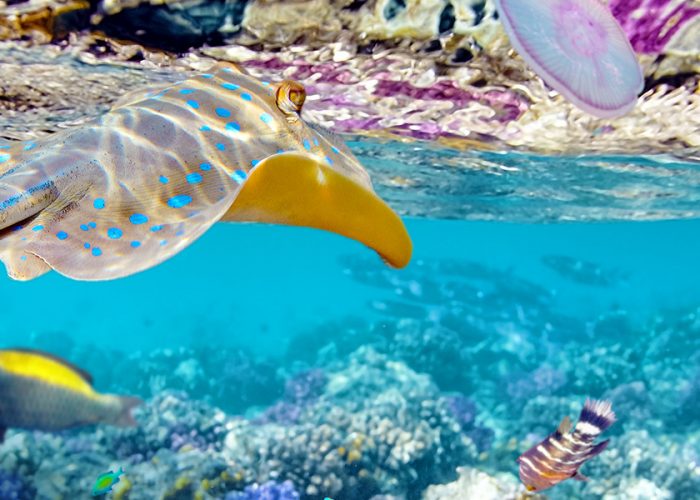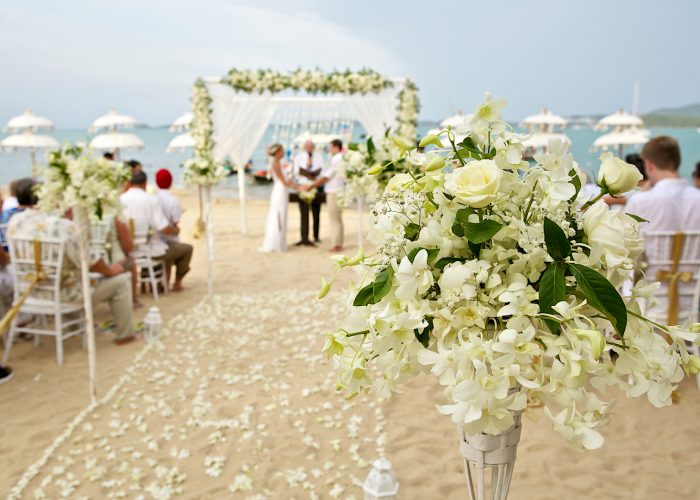Meet a Monkey
Despite the name, you won’t actually see baboons at the Community Baboon Sanctuary — “baboon” is the local Creole word for the black howler monkey, an endangered species that lives only in select parts of Belize, Guatemala and Mexico. More than 2,000 of the monkeys are protected at this wildlife sanctuary in Bermudian Landing (about an hour west of Belize City).
You’ll probably hear the monkeys before you see them overhead; their distinctive rough call sounds like a cross between a bark and a growl, and can be heard more than a mile away. Also living in the sanctuary are hundreds of other species, including parrots, river turtles, crocodiles, iguanas and jaguars.
You can spot wildlife on a day- or nighttime walking tour or a guided canoe ride on the Belize River. The sanctuary can also arrange lodging at nearby Creole bed and breakfasts or in cabanas adjacent to the sanctuary’s nature museum.
Advice from a Traveler Who’s Been There
Baboon Sanctuary in Belize by tanyanubin
“We stood quietly while [our guide] called, and soon two young monkeys came through the trees and down right to Shane! He fed them small pieces of banana. Then (thrill of my life!!!) he let me hold a piece of banana and a 1-year-old howler named Happy came to me, held my hand gently in his warm, soft little hands, and took the banana. He was trusting and adorable! That was the highlight of my trip.” Read more!
Relax on a Car-Free Island
Caye Caulker is the laid-back little sister of the more developed Ambergris Caye (located about 11 miles to the north). Measuring just four miles from end to end, the island is small enough that locals and visitors get around either on foot or by riding a bike or
golf cart. Wander along Front Street to browse small local shops, book a snorkeling excursion or enjoy an easygoing lunch on a dock over the Caribbean Sea.
This is the perfect spot to lie back in a hammock for a few days, but there are also plenty of local activities to keep you busy. Just about every dive shop in town can take you out to the Hol Chan Marine Reserve for snorkeling, and many companies (including Tsunami Adventures and Anda De Wata Tours) also offer excursions to see the manatees at nearby Swallow Caye. You can rent canoes and kayaks from various waterfront outfits, or go swimming with the locals at the Split (a waterway where Hurricane Hattie blasted right through the island back in the 1960s).
You can reach Caye Caulker by air or water taxi from Belize City.
Advice from a Traveler Who’s Been There
Belize and Guatemala: Ruins, Rain Forests and Reefs by soliteyah
“The beachfront area is colorful and fun, though there’s very little ‘beach’ to speak of — just a narrow strip of sand with piers stretching out into the water. Because there’s so much sea grass right off the beach, most people either swim off the end of one of the piers or go up to the Split, where Hurricane Hattie cut the island in two, and swim in the crystal-clear waters there.”
Read more!
Discover Remote Ruins
Caracol is the largest Mayan ruin in Belize, but it’s also one of the least visited, thanks to its out-of-the-way location in the Cayo jungle. In its heyday Caracol was home to an estimated population of 140,000 and even defeated the nearby city of Tikal, Guatemala, in a battle in the year 562 A.D. Scholars believe that the site was abandoned around 1050.
The site is still being excavated, but visitors can wander among the ruins of houses and ball courts, and even climb the impressive Caana, or Sky Palace; this 136-foot pyramid is the tallest Mayan building in the country.
You can drive yourself to Caracol (a 4WD vehicle is recommended) or join an organized tour. Pacz Tours and Cayo Adventure Tours both offer excursions from San Ignacio.
Learn the Art of Drumming
Belize’s Garifuna people have a rich culture rooted in the traditions of their ancestors, a mix of Arawak and Carib Indians and African slaves who escaped a 17th-century shipwreck off the coast. Most Garifuna communities are located in the southern part of Belize in towns such as Hopkins, Dangriga and Punta Gorda. Music is one of the most distinctive parts of the Garifuna culture, and visitors can get a hands-on taste of it by learning how to make or play a traditional drum.
At the Warasa Garifuna Drum School in Punta Gorda, you can book a one- to two-hour drumming lesson in which you learn some common traditional rhythms. You can also discover how to make the drum itself (in a workshop that can last anywhere from an hour to two days, depending on which steps of the process you want to try). Dance lessons are available too.
Lebeha Drumming Center in Hopkins also offers private and group drumming lessons, as well as affordable overnight accommodations right on the beach. Another option is Studio Gallery Cayetano in Dangriga, which offers a 45-minute drum and dance workshop in the studio of a Garifuna artist and musician.
Take a Bite Out of Belize
It’s easy to eat your way around Belize while also learning about the country’s history and culture. Why not have your dessert first and start with a chocolate tour? MayaWalk Tours offers a three-hour excursion from San Ignacio that takes you to a Mayan cacao farm, where you’ll explore the grounds and watch a demonstration on how to make chocolate. At the end of the tour you can enjoy a traditional Mayan chocolate drink.
In the Placencia area, Taste Belize offers a number of chocolate experiences, including a full-day Chocolate Decadence option that visits a farm and a chocolatier, featuring lunch and plenty of sweet samples. Taste Belize can also indulge your savory side with visits to a cheese-making facility and a hot sauce factory.
Also near Placencia, Bunches of Fun takes visitors out into the fields where bananas are grown and explains how the fruits make it from farm to food store. The experience ends with a sample of fried bananas.
Swim in the Other Blue Hole
Most visitors to Belize have heard of the Great Blue Hole, a massive sinkhole off the coast that draws scuba divers from around the world. But you might not know that there’s another Blue Hole on the mainland where you can take a refreshing dip without any special equipment or expertise.
St. Herman’s Blue Hole National Park is located about 12 miles south of Belmopan. It’s just a quick walk from the entrance to the serene turquoise pool from which the park draws its name. If you want to do more than go for a swim, you can also explore nearby Herman’s Cave, though a guide is required to go tubing beyond the main entranceway. You can hire a guide at the entrance to the park.
Explore an Untouched Cave
Belize’s landscape is riddled with caves, which are fascinating to visitors not only for their dark, otherworldly beauty but also for their importance in Mayan history. The Mayans often used caves for sacred rituals, and remnants of these ceremonies, such as shards of pottery or even bones from human sacrifices, can still be seen today.
There are numerous opportunities to explore Belize’s caves, from tubing down underground rivers to canoeing into Barton Creek Cave. But if you’re looking for caves that see few crowds and still feel undiscovered, try Actun Chapat and Actun Halal. Located on private property, these caves can only be toured with Belizean Sun, an operator located near the Xunantunich ruins in Cayo.
The full-day tour starts with a 4×4 trip and then a hike through the jungle to the mouth of the first cave. Once inside, you’ll wind through narrow tunnels into lofty chambers, spotting Mayan artifacts along the way. This tour requires sturdy shoes, a reasonable level of fitness and clothes you don’t mind getting dirty.
Hide Out in a Jungle Lodge
Looking to spot rare wildlife, hike to a waterfall or simply escape from the real world for a few nights? A stay in a jungle lodge might be just the ticket. There are dozens to choose from in Belize, ranging from the lavish to the rustic.
The Lodge at Chaa Creek near San Ignacio opened in 1981 as the country’s first jungle lodge. Today it’s one of the most luxurious properties in the country, with amenities such as an infinity pool, spa and alfresco restaurant. Lodging options include treetop suites, thatched cottages and even “glamping” bungalows (the most affordable option).
For travelers hoping to catch a glimpse of jaguars in the wild, the remote Chan Chich Lodge in northwestern Belize is one of the best places to stay; it offers nighttime safari drives to spot this elusive predator (as well as ocelots and pumas).
Other lodges we love include the Lamanai Outpost Lodge, which will take you on crocodile encounters aboard an airboat, and Belcampo Belize, which has its own organic farm.
Snorkel Without the Crowds
The most popular places to snorkel in Belize are Hol Chan Marine Reserve and Shark-Ray Alley, located near the tourism hot spot of Ambergris Caye. Their easily accessible location and abundant marine life are ideal for snorkelers and divers, but they also draw a crowd. If you’re a more serious snorkeler or a diver seeking a little more serenity, consider the country’s more remote alternatives.
Our favorite is Glover’s Reef Marine Reserve, located off the coast of Hopkins. The sheltered lagoon in the Glover’s Reef atoll is home to what many believe to be the best variety of marine life in Belize, ranging from nurse and whale sharks to turtles and eels — not to mention countless colorful tropical fish. You can access the reef via a 1.5-hour boat ride from Hopkins with companies such as Belize Underwater, or you can explore in more depth by staying overnight in one of the small hotels on the atoll, including Glover’s Reef Basecamp and Isla Marisol Resort.
Advice from a Traveler Who’s Been There
Diving in Belize by Kathy R.
“Our stay at Isla Marisol Resort was delightful. Though we missed whale shark season by two months, we often saw many large beasties on Glover’s Reef. There were daily sightings of spotted eagle rays, hawksbill turtles and nurse sharks. The reefs were healthy and full of fish. There were several sites we referred to as The Aquarium because of the numbers of schools of fish around.” Read more!
Live Like the Mayans
Belize was once one of the centers of the Mayan empire, and the legacy of this culture lives on here — not only in the magnificent ruins scattered around the country but also in the Mayans’ way of life, which their descendants are trying to preserve.
Bocawina Rainforest Resort & Adventures, an eco-resort and tour operator located near Dangriga, offers a Mayan Living Experience in which travelers can watch locals demonstrate traditional Mayan skills such as making tortillas from scratch and crafting baskets or
musical instruments. You’ll share a meal with a family, tour a spice farm and visit the less-traveled Mayan ruins of Nim Li Punit.
Another option is the Maya Experience offered by PG Tours in Punta Gorda. Women from a local Mayan village will teach you to make chocolate, weave baskets and bake tortillas. This experience also includes a traditional lunch.
